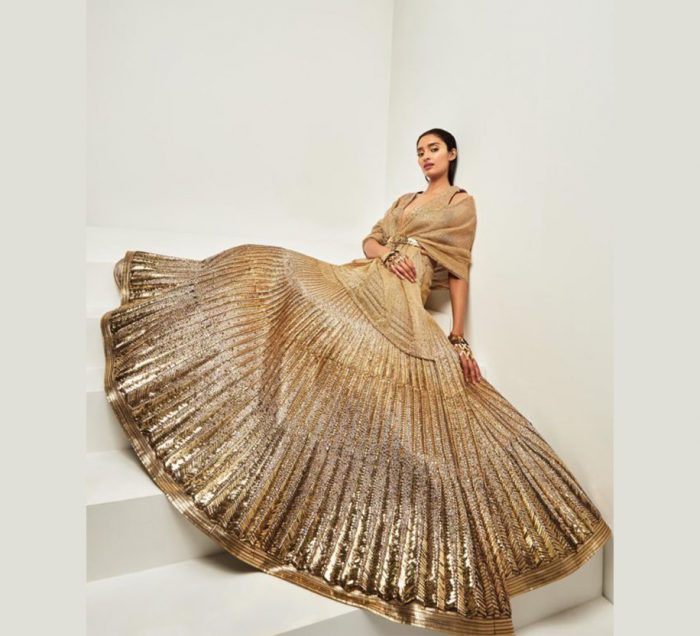Bangles and the Bride
Preeta Agarwal shares the story of the bangle, and why brides of different communities wear different bangles.
There is a beautiful significance on why every bride or married woman wears ornaments- bangles, nose-pin, maangtika, toe rings and mangalsutra. Preeta Agarwal shares the story of the bangle, and why brides of different communities wear different bangles.
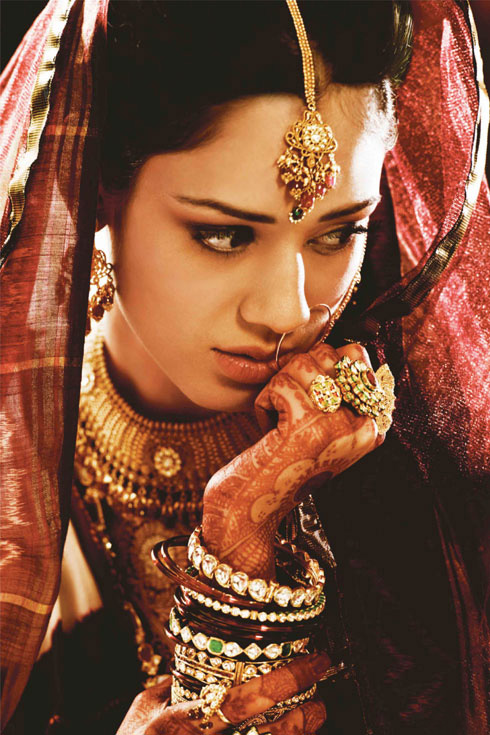
Photograph Courtesy Tanishq
A mother, a wife or a sister, hands of a woman are where true love rests. And these hands look even more beautiful when adorned with bangles, the favorite ornament and accessory for most Indian women. Popularly known as churi, kangan, kada or valai, bangles have many other regional names.
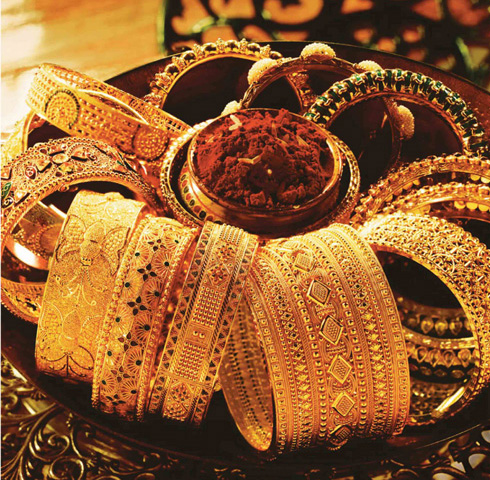
Gold bangles by Tanishq
In India, Bangles also symbolize marriage. Each state or religion has its own traditions and materials used to symbolize marriage. In a lot of communities & regions it is considered inauspicious for a married woman to have bare arms without bangles.
In Rajasthan and Gujarat, a set of fifty-two ivory bangles (Haathi dant ki churi) is worn in both hands.
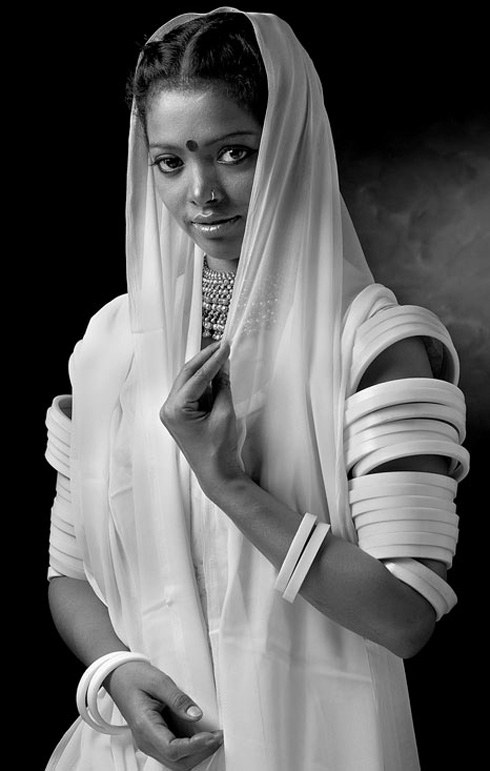
Ivory bangles worn by women in Rajasthan
In Bihar and West Bengal, it’s a tradition to wear lac bangles (lac ki churi).

Lac bangles
Conch shell bangles (bangri) are worn by Bengali women symbolizing their desire for a long married life.
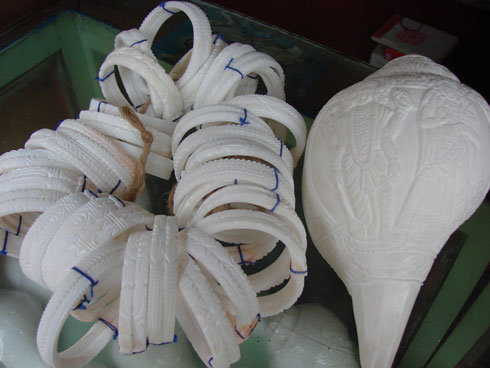
Conch shell bangles
India’s favorite glass bangles (kaanch ki churi) are a symbol of an honored wife and mother. In most Hindu families, the maternal family gifts red and green glass bangles to the new bride. The different colors of bangles hold unique meanings. Red shows energy, green is a reminder of the wedding, yellow signifies happiness, gold symbolizes fortune.

Glass bangles
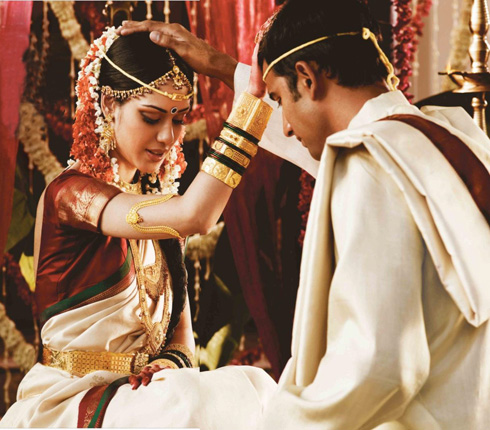
Photograph courtesy Tanishq- Telegu bride
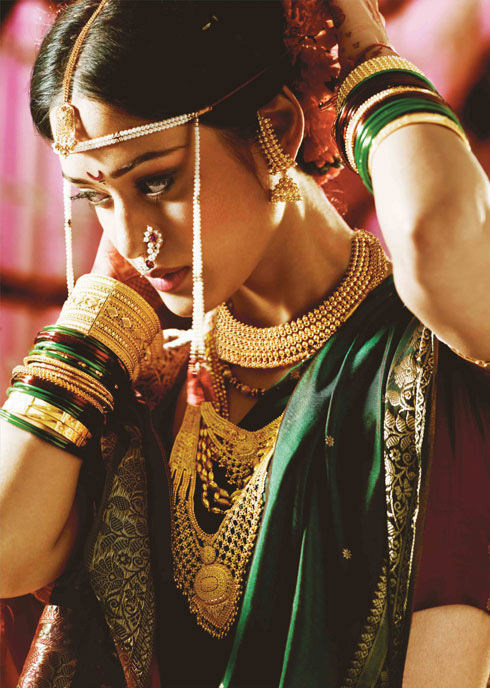
Photograph courtesy Tanishq – Marathi bride
Platinum, gold, silver and iron; bangles are made and loved in different metals. The Sikhs wear a simple iron bangle while at exclusive stores oval Platinum bangles are a popular pick. Gold of course, continues to be all-popular- enamel, wirework, stone setting and various other techniques are used to enhance the metal. Pacheli or bangri are very famous forms of bangles originating from Rajasthan.
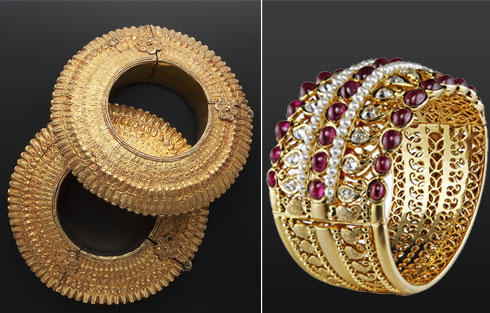
(Left)Rajasthani Gold bangles by Amrapali
(Right)Traditional kundan cuff with polkis, rubies and pearls by Mirari
‘The Chuda’-a set of red and white bangles are worn by Punjabi bride for a minimum 45 days or upto a year after the wedding, depending on the family traditions and the newly-weds wish. Nowadays, it is not unusual to see brides from other communities wear a Chuda.
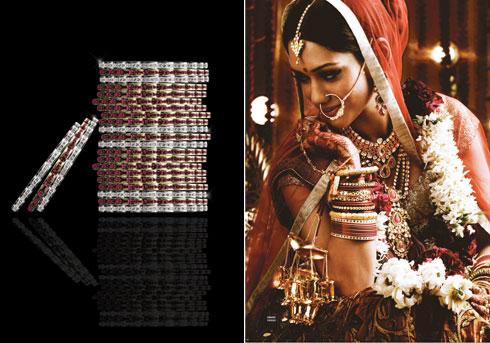
(Left)Diamond and ruby chuda set by Mirari
(Right)Punjabi bride with chuda. Photograph Courtesy Tanishq
Bangles don’t only symbolize femininity and marriage their sounds are very charming too. The jingling musical sound from the bangles on the hands of the newly married woman is a tickling call to her husband. Bangles are gifted to women during the baby shower because the tinkle of bangles provides acoustic stimuli for the baby. The calming sound also reduces a pregnant woman’s stress and helps the fetus develop the ability to hear.
The current bangle trends are bold and unique. Most girls prefer a pair of earrings and a bold cuff for a traditional event. Flexible thin bracelets match very well with the corporate look. You can play with textures, colors and even combinations of materials and metals for a funkier look. So go ahead, and take your pick!
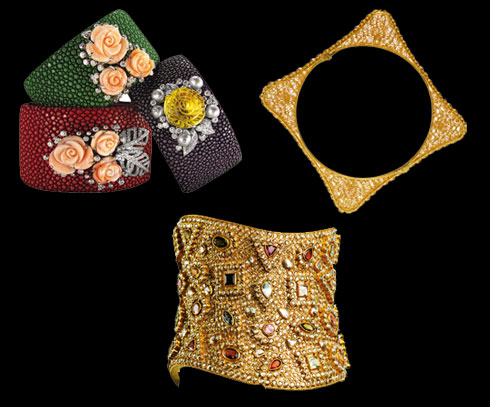
Floral cuffs with precious stones by Mirari, A contemporary square bangle using filigree technique by Amrapali, A contemporary cuff using traditional techniques from Zoya by Tanishq


